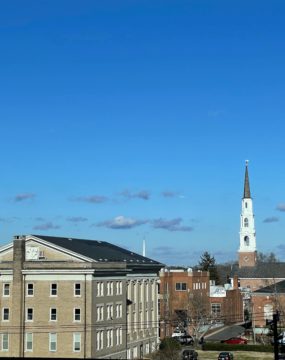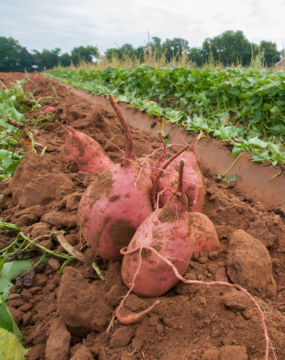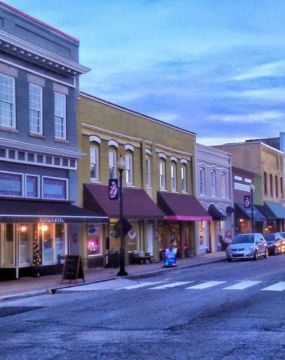NC in Focus
Keep up with our latest demographic insights

It’s been nearly a year since our lives were first disrupted by the global COVID-19 pandemic. What do cumulative case counts, deaths, and vaccination levels look like in North Carolina? Here’s the latest data according to NC DHHS data accessed on 2/11/2021. I used the projected 2020 population from the state demographer to calculate levels per 10,000 residents. COVID-19 Cases There have been 805,889 cases recorded in North Carolina counties or 758 per 10,000 residents.…

North Carolina’s Hispanic population is now greater than one million people, with 1,026,000 residents in 2019. The state’s Hispanic/Latino population grew from just over 75,000 in 1990 to 800,000 in 2010. Between 2010 and 2019, the U.S. Census Bureau estimates that North Carolina’s Hispanic population grew by 226,000 new residents, an increase of 28.3%, faster than the growth of this population nationwide (19.6%). The Hispanic/Latinx communities in Mecklenburg County (153K) and Wake County (116K) comprise…

We recently worked with the Chamber for a Greater Chapel Hill-Carrboro, the governments of the Towns of Chapel Hill, Carrboro, and Hillsborough, and Orange County to streamline existing processes for acquiring, updating, and maintaining the data they use for their community reports and presentations. As part of that work, we've released a series of reports looking at demographic and economic trends in Orange County, NC. Here are some highlights from Carolina Demography's report on community…

We recently worked with the Chamber for a Greater Chapel Hill-Carrboro, the governments of the Towns of Chapel Hill, Carrboro, and Hillsborough, and Orange County to streamline existing processes for acquiring, updating, and maintaining the data they use for their community reports and presentations. As part of that work, we've released a series of reports looking at demographic and economic trends in Orange County, NC. Here are some highlights from Carolina Demography's report on community…

We recently worked with the Chamber for a Greater Chapel Hill-Carrboro, the governments of the Towns of Chapel Hill, Carrboro, and Hillsborough, and Orange County to streamline existing processes for acquiring, updating, and maintaining the data they use for their community reports and presentations. As part of that work, we've released a series of reports looking at demographic and economic trends in Orange County, NC. Here are some highlights from Carolina Demography's report on population…

North Carolina plays a major role in our end-of-year holidays: we lead the nation in sweet potato production and are also one of the largest producers of Christmas trees, producing over 20% of the nation’s real trees. This year, in the midst of the pandemic, tree prices have risen dramatically as a result of so-called “panic buying”. If you’ve waited to pick up a tree, move quickly! Before we break for the holidays ourselves, we’d…

The Thanksgiving holiday is important to North Carolina’s agriculture, as we continue to lead in sweet potato production across the nation. Once relegated to the holidays primarily, the sweet potato has now been embraced as an important staple in healthy diets. In fact, sweet potatoes were ranked among the top ten best foods to eat regularly, according to the Center for Science in the Public Interest. Whether you serve North Carolina’s state vegetable year-round or…

Active-duty military personnel and veterans have a significant presence in North Carolina. North Carolina is home to two major military bases—Fort Bragg (Army) and Camp Lejeune (Marine Corps)—in addition to two Marine Corps Air Stations at New River and Cherry Point and Seymour Johnson Air Force Base. As a result, more North Carolina adults are veterans than the national average: 7.9% versus 6.9% nationwide. In 2019, nearly 642,000 veterans lived in North Carolina according to the most recent…

Nationally, there are 384 metropolitan statistical areas (MSA), which are defined as an economically integrated set of counties with a core central city with a population of 50,000 or more. They range in size from Carson City, Nevada (55,916) to the New York-Newark-Jersey City MSA (19,216,182) which crosses New York, New Jersey, and Pennsylvania. Within North Carolina, there are 15 unique metro regions, ranging from Goldsboro (123,131) to Charlotte-Concord-Gastonia (2,636,883 across NC and SC). With a combined population of 283 million, nearly seven of…

Nationally, rural counties reported a record number for new COVID-19 infections between September 20-26, according to a recent report from the Daily Yonder. More than half of rural counties nationwide—990—were in the red zone, meaning that they had more than 100 new cases per 100,000 residents in a one-week period. [alert type= "info" title = "Defining the 'Red Zone'" body= "According to the White House Coronavirus Task Force, the red zone corresponds to 101 or…
Your support is critical to our mission of measuring, understanding, and predicting population change and its impact. Donate to Carolina Demography today.